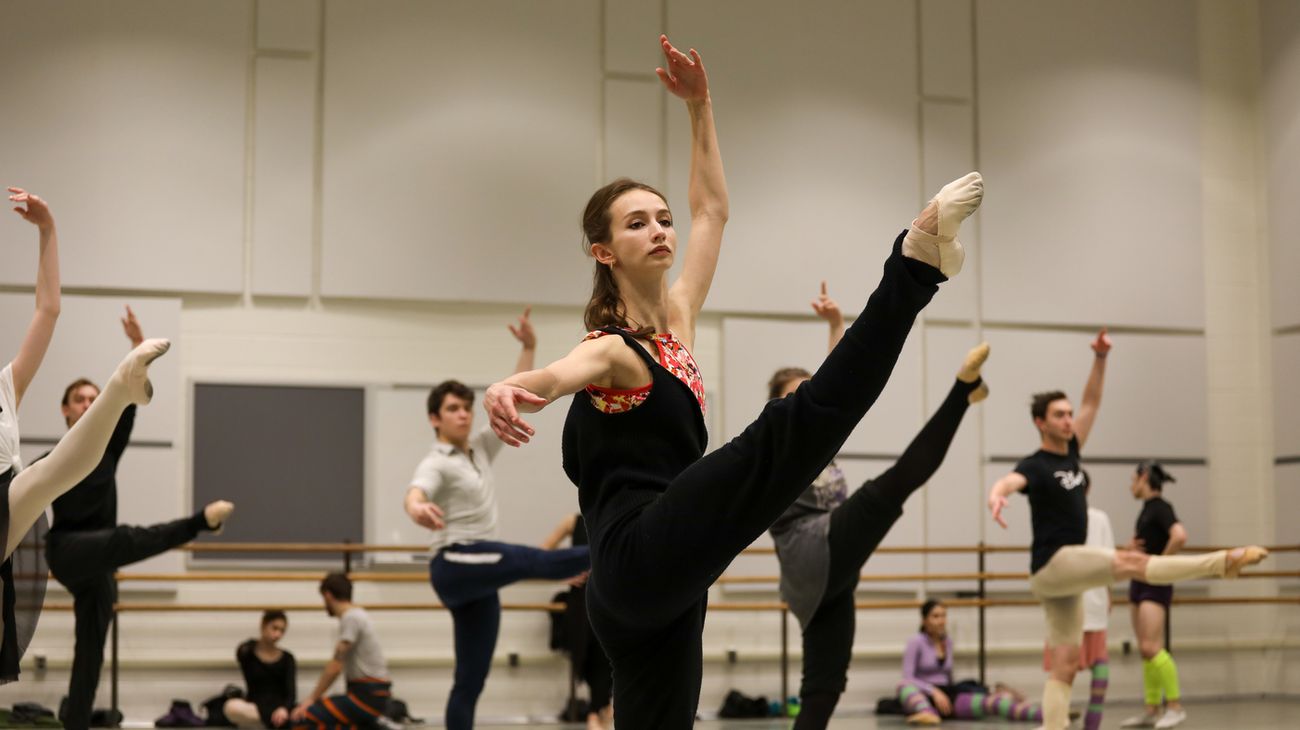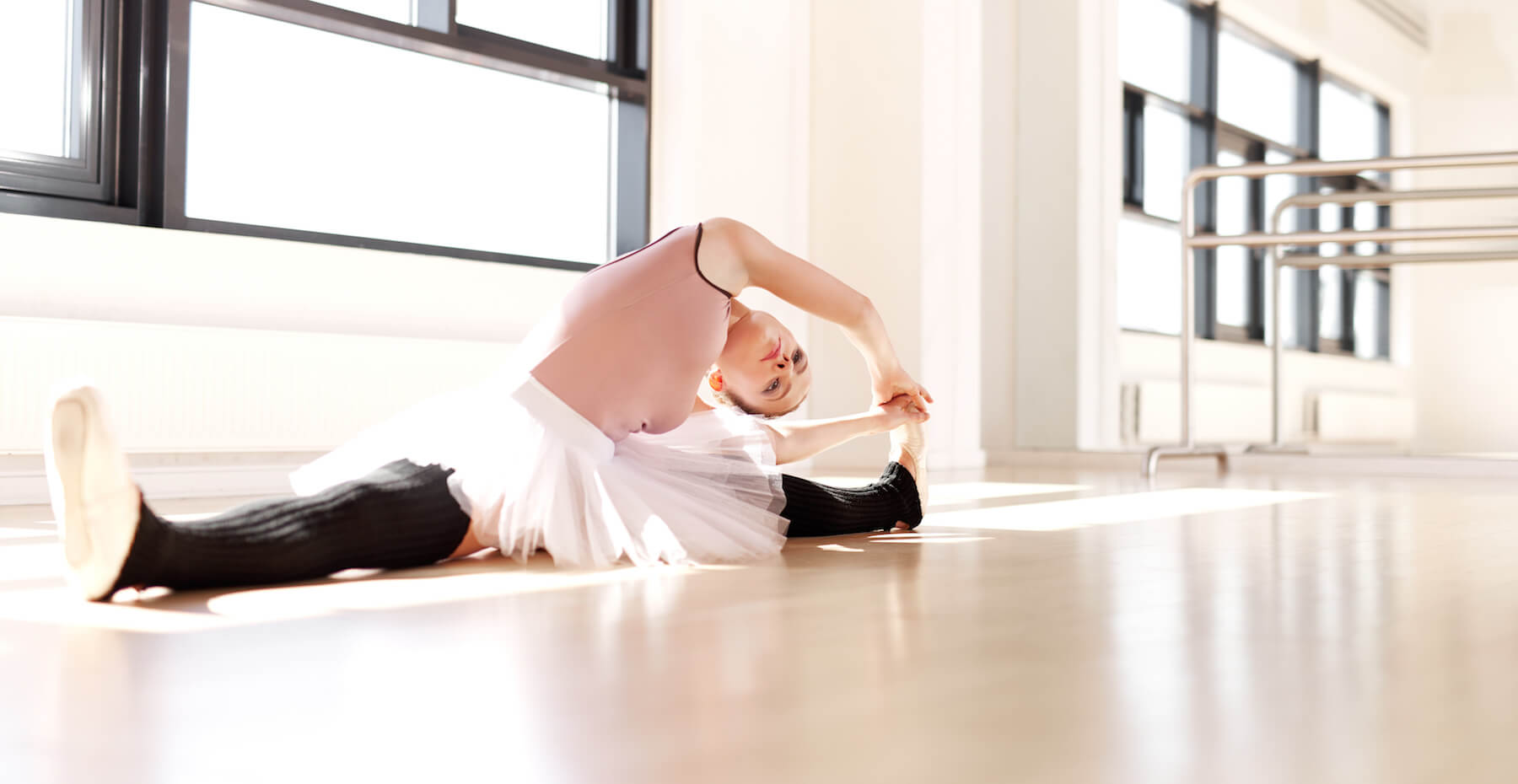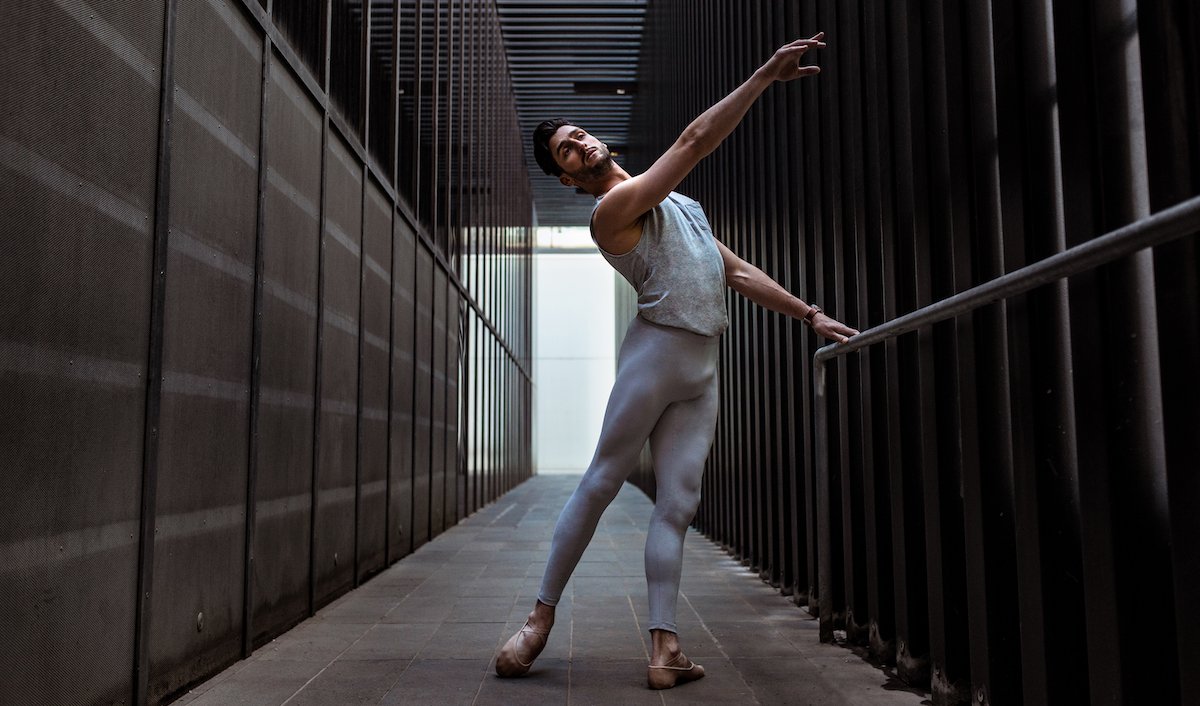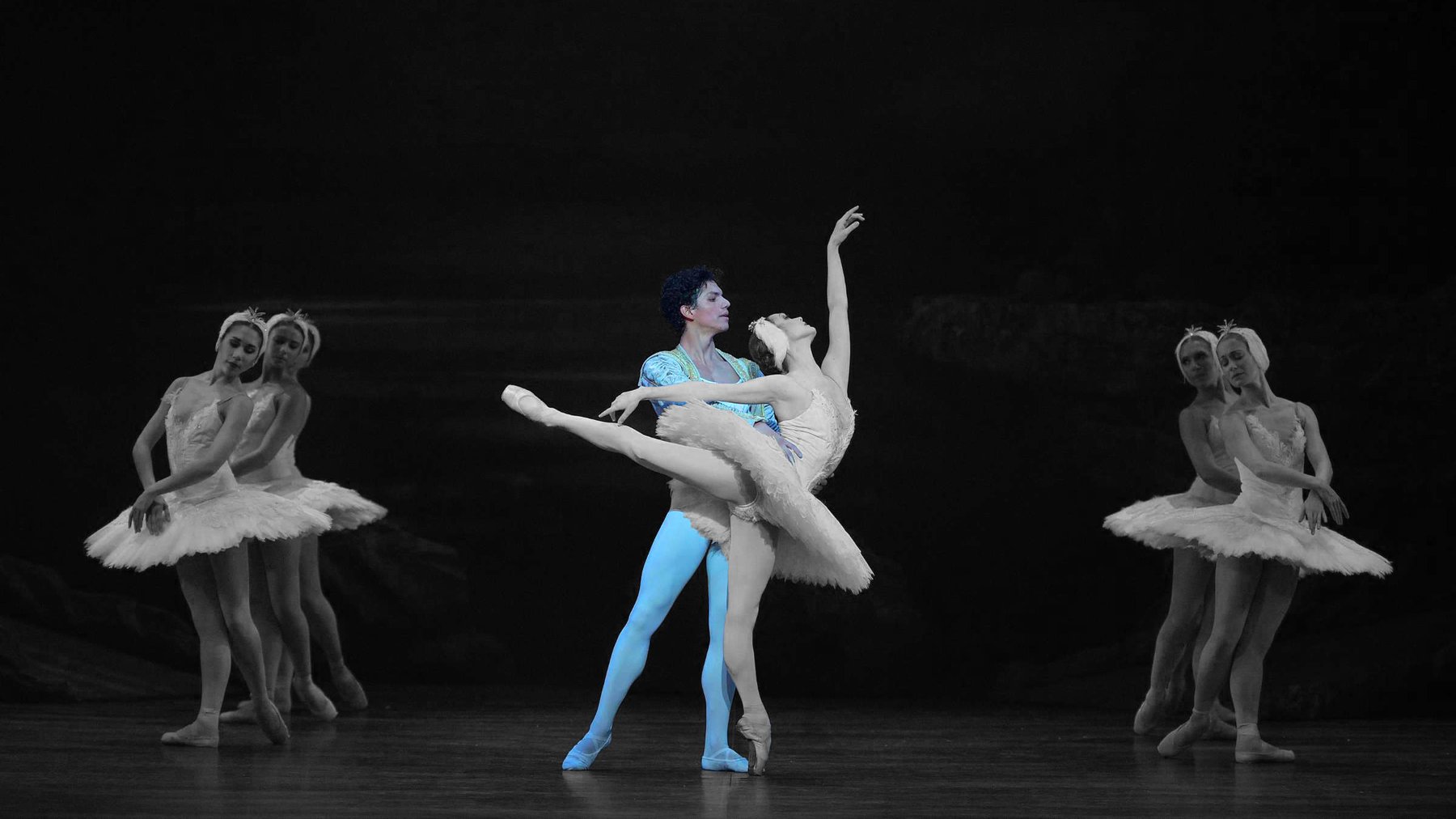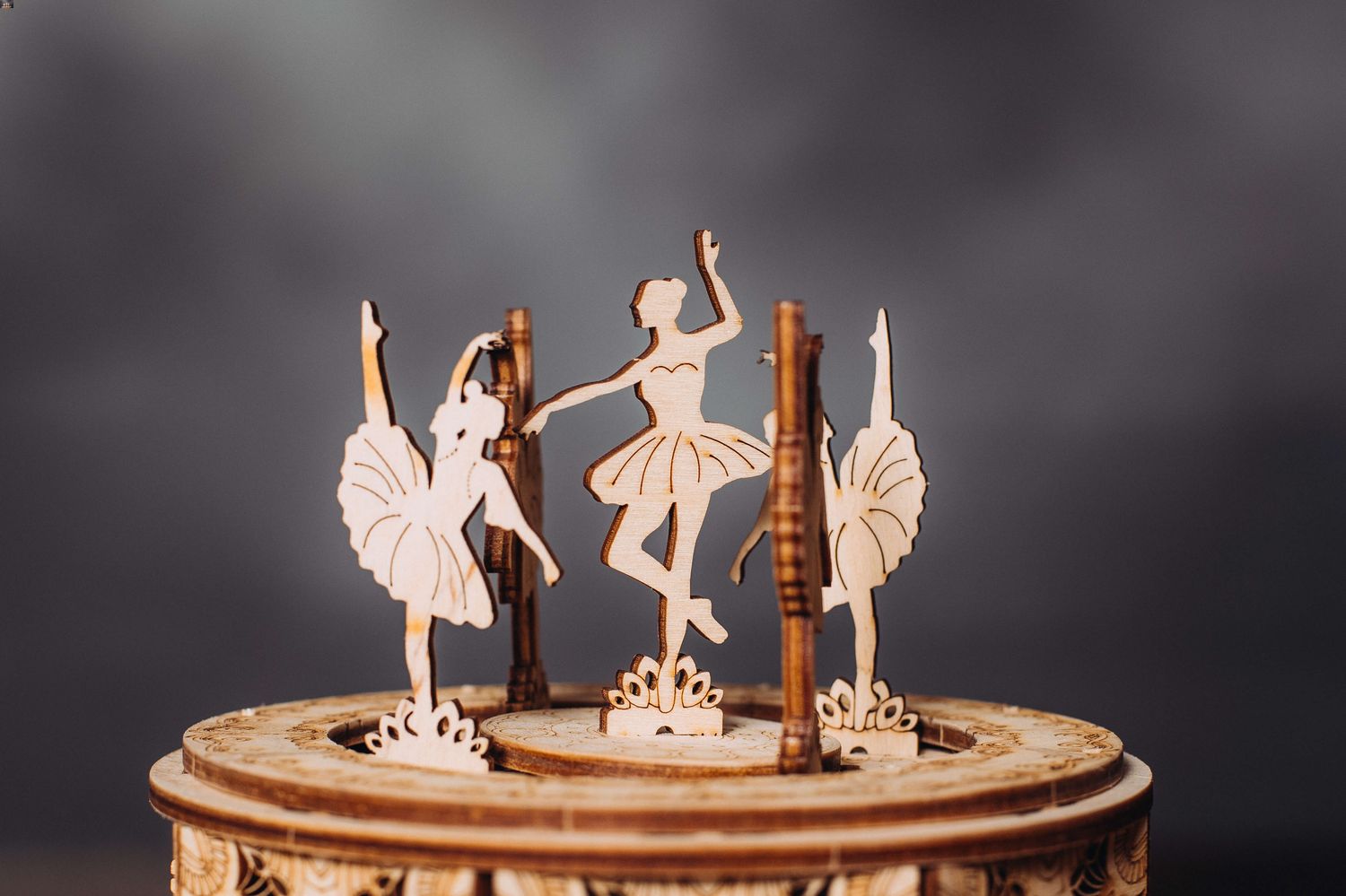Home>Events & Info>Ballet>How To Stretch Like Ballet Dancers
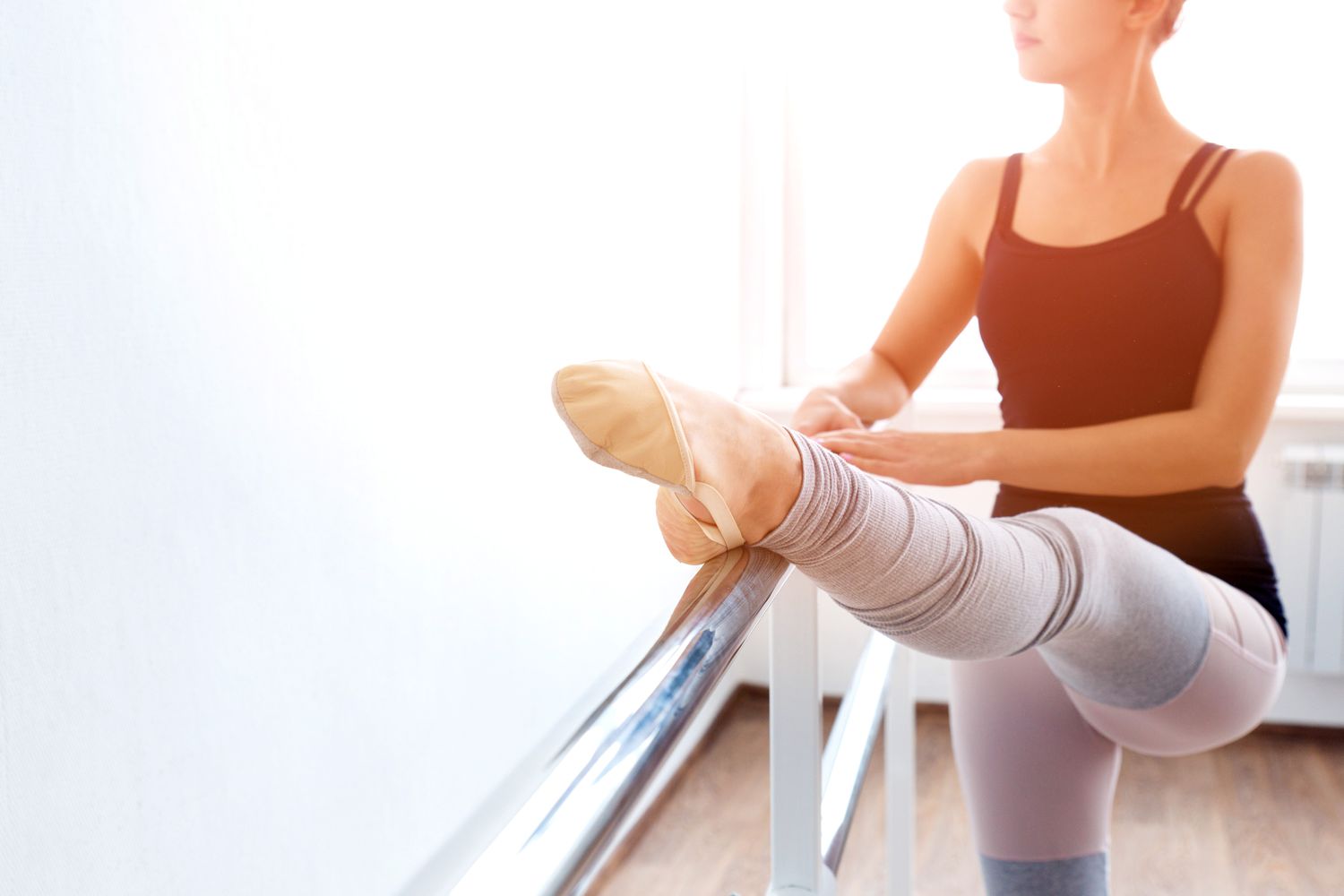

Ballet
How To Stretch Like Ballet Dancers
Published: January 8, 2024
Learn how to stretch like ballet dancers with these effective techniques and improve your flexibility for better dance performance.
(Many of the links in this article redirect to a specific reviewed product. Your purchase of these products through affiliate links helps to generate commission for AudioLover.com, at no extra cost. Learn more)
Table of Contents
Introduction
Ballet is a timeless and captivating art form that requires discipline, precision, and grace. Behind the seemingly effortless movements of ballet dancers lies years of rigorous training and dedication. One crucial aspect of a ballet dancer’s routine is stretching. Proper stretching is not only vital for injury prevention but also enhances performance by improving flexibility, balance, and strength.
In this article, we will delve into the world of ballet stretching and explore the techniques and exercises utilized by ballet dancers to achieve their remarkable feats of athleticism. Whether you are a ballet dancer yourself, an aspiring dancer, or simply someone looking to improve their flexibility, this guide will provide you with valuable insights and practical tips to elevate your stretching routine.
Stretching is not limited to the confines of ballet; it is an essential practice for athletes of all disciplines and individuals seeking overall physical well-being. By adopting ballet-inspired stretching techniques, you can unlock your body’s potential and experience the transformative power of a well-rounded stretching routine.
So, let’s embark on this journey into the world of ballet stretching, where we’ll discover the importance of stretching, the benefits it holds, and the exercises that can help you achieve your stretching goals.
Importance of Stretching
Stretching plays a crucial role in any physical activity or exercise routine, and ballet is no exception. It provides numerous benefits that contribute to overall physical health and performance. Here are some of the key reasons why stretching is so important:
- Injury prevention: Ballet dancers subject their bodies to demanding movements that involve leaps, turns, and complex footwork. Without proper stretching, the muscles may become tight and prone to injury. Stretching improves muscle flexibility and joint range of motion, reducing the risk of strains, sprains, and tears.
- Improved flexibility: Flexibility is crucial for ballet dancers to execute the intricate movements and positions required of them. Regular stretching increases muscle elasticity and allows for a wider range of motion, enabling dancers to perform with fluidity and grace.
- Enhanced performance: When muscles are properly warmed up and stretched, they function more efficiently. This leads to improved performance in terms of strength, speed, and agility. The flexibility gained through stretching also allows dancers to achieve more challenging and aesthetically pleasing movements.
- Postural alignment: Ballet requires a strong and aligned posture, with a long, lifted spine. Stretching helps to correct muscular imbalances, lengthen tight muscles, and strengthen weak muscles, ultimately promoting better posture and body alignment.
- Relaxation and stress relief: Stretching not only benefits the physical body but also the mind. It promotes relaxation, releases tension in the muscles, and reduces stress. The focused and meditative nature of stretching can provide a sense of calm and mindfulness, perfect for centering oneself before any intense physical activity.
Understanding the importance of stretching in ballet is the first step towards developing a well-rounded routine that promotes both physical and mental well-being. By consistently incorporating stretching into your practice, you can optimize your performance, prevent injuries, and enhance your overall ballet experience.
Benefits of Ballet Dancers’ Stretching Routine
A ballet dancer’s stretching routine is a vital component of their training regimen, providing a multitude of benefits that are essential for their performance and overall well-being. Let’s explore some of the key advantages of incorporating a ballet-inspired stretching routine:
- Improved Flexibility: Ballet dancers are known for their extraordinary flexibility, which allows them to effortlessly execute high extensions, splits, and intricate movements. Regular stretching helps to lengthen the muscles and tendons, enhancing flexibility and enabling dancers to achieve a greater range of motion.
- Enhanced Strength: Contrary to popular belief, stretching is not just about flexibility. It also plays a crucial role in building strength. Ballet dancers rely on strong muscles to perform complex jumps, turns, and balances. Through targeted stretching exercises, dancers can develop both the length and strength of their muscles, improving their overall athletic performance.
- Increased Balance and Stability: Balance is essential in ballet, as dancers often execute intricate steps on the tips of their toes (en pointe). Regular stretching helps to improve proprioception, or the body’s sense of balance and spatial awareness. This leads to better stability and control during challenging ballet movements.
- Injury Prevention: The demanding physical nature of ballet puts dancers at risk of various injuries, such as muscle strains, tendonitis, and stress fractures. A consistent stretching routine helps to warm up the muscles, increase circulation, and improve flexibility, lowering the risk of these injuries. It also promotes proper alignment and posture, reducing strain on the body.
- Improved Performance: A comprehensive stretching routine can significantly improve a dancer’s overall performance. By increasing flexibility, strength, and balance, dancers can execute movements with greater precision, control, and artistry. Additionally, stretching helps to alleviate muscle soreness and tension, enabling dancers to recover more quickly and perform at their best.
It is important to note that consistency and proper technique are key when it comes to a ballet dancer’s stretching routine. Gradual progression, mindful breathing, and proper alignment should be emphasized to reap the maximum benefits and prevent any potential injuries. Whether you are a dancer or simply someone looking to enhance your physical well-being, incorporating elements of a ballet dancer’s stretching routine can bring about remarkable improvements in flexibility, strength, balance, and overall performance.
Warm-Up Exercises
Prior to any physical activity, including ballet, it is crucial to warm up the body to prepare the muscles, joints, and cardiovascular system for the upcoming demands. A well-designed warm-up routine helps to increase blood flow, elevate body temperature, and improve flexibility. Here are some effective warm-up exercises commonly used by ballet dancers:
- Cardiovascular Exercise: Start your warm-up with five to ten minutes of low-impact cardio exercises such as brisk walking, light jogging, or cycling. This increases heart rate, promotes blood flow, and raises body temperature.
- Dynamic Stretches: Perform dynamic stretches that involve moving the muscles through a full range of motion. Examples include arm circles, leg swings, and trunk twists. Dynamic stretches simultaneously warm up and stretch the muscles, preparing them for the demands of ballet movements.
- Joint Mobilization: Pay attention to your joints by performing gentle movements to lubricate them and improve mobility. Ankle rolls, wrist circles, and neck rotations are some examples of joint mobilization exercises to include in your warm-up routine.
- Core Activation: Engage your core muscles with exercises such as planks, ab curls, or Russian twists. A strong core provides stability for ballet movements and supports proper alignment.
- Balance Exercises: Practice standing on one foot or perform simple balance poses such as the tree pose or passé. These exercises help to improve stability and control, which are essential in ballet.
Remember to perform each warm-up exercise in a controlled and fluid manner. Focus on your breath, maintain proper alignment, and gradually increase the intensity as your body warms up. A well-executed warm-up routine prepares your body and mind for the physical demands of ballet, reduces the risk of injury, and optimizes performance. Incorporate these warm-up exercises into your ballet practice to ensure a safe and effective training session.
Upper Body Stretches
In ballet, a dancer’s upper body plays a crucial role in expressing emotion and creating beautiful lines. It is important to stretch and maintain flexibility in the upper body to achieve fluid movements and graceful lines. Here are some effective upper body stretches to incorporate into your ballet stretching routine:
- Neck Stretch: Gently tilt your head to one side, bringing your ear towards your shoulder. Hold for a few seconds and then repeat on the other side. Release any tension in the neck and aim to increase the stretch with each repetition.
- Shoulder Rolls: Roll your shoulders forward and backward in a circular motion. Focus on relaxing the muscles and loosening any tension in the shoulders. Perform several rotations in each direction.
- Arm Swings: Extend your arms out to the sides at shoulder height. Swing them forward and backward, crossing in front of your body and then opening wide to the sides. This exercise loosens the shoulders and improves flexibility in the chest and back.
- Spine Twist: Sit tall on the floor with your legs extended in front of you. Place your right hand on the outside of your left knee and gently twist your upper body to the left, looking over your left shoulder. Hold for a few seconds and then repeat on the other side. This stretch promotes spinal mobility and improves flexibility in the torso.
- Chest Opener: Stand with your feet hip-width apart and interlace your fingers behind your back. Slowly lift your arms towards the ceiling, pushing your chest forward and opening your heart. Hold this position for a few seconds, feeling the stretch in your chest and shoulders.
Remember to perform these upper body stretches in a controlled and gentle manner. Listen to your body and never force a stretch beyond your comfort level. It is essential to maintain proper alignment and posture while performing these stretches.
Incorporating regular upper body stretches into your ballet routine will help to improve flexibility, promote better posture, and enhance your overall aesthetic as a dancer. These stretches also reduce the risk of upper body injuries and allow for more fluid and expressive movements in your ballet performances.
Lower Body Stretches
The lower body is fundamental in ballet, as it supports the dancer’s movements, stability, and balance. Stretching the lower body muscles is essential for achieving the flexibility and strength required in ballet. Here are some effective lower body stretches to incorporate into your ballet stretching routine:
- Hamstring Stretch: Sit on the floor with your legs extended in front of you. Reach forward and try to touch your toes, keeping your back straight. You should feel a gentle stretch in the back of your thighs. Hold the stretch for 30 seconds to one minute, breathing deeply.
- Quadriceps Stretch: Stand tall and balance on one leg. Bend your other knee, bringing your heel towards your glutes, and grasp your foot with your hand. Keep your knees close together and push your hip forward to intensify the stretch in the front of your thigh. Hold for 30 seconds and then switch sides.
- Inner Thigh Stretch: Sit on the floor and open your legs into a wide “V” shape. Slowly lean forward, reaching your hands towards the center. Feel the stretch in your inner thighs and hold the position for 30 seconds. Relax and repeat a few times, gradually increasing the depth of the stretch.
- Calf Stretch: Stand facing a wall, with one foot forward and the other foot behind you, both pointing towards the wall. Place your hands on the wall and keep your back leg straight. Lean towards the wall, feeling the stretch in your calf. Hold for 30 seconds and then switch legs.
- Ankle Stretch: Sit on the floor with one leg straight in front of you. Cross the other leg over it, placing the foot and ankle just above the knee of the straight leg. Gently press down on the crossed leg’s knee, feeling the stretch in your ankle. Hold for 30 seconds and then switch sides.
As with any stretches, it is important to approach them with caution. Stretching should never be painful, and it is essential to avoid bouncing or jerking movements that can lead to injury. Focus on deep breathing and relax into the stretches, allowing your body to gradually release tension and increase flexibility.
Incorporating regular lower body stretches into your ballet routine not only improves flexibility and range of motion but also helps prevent injuries such as muscle strains and imbalances. These stretches give you the foundation you need to execute precise ballet movements, leaps, and turns with grace and control.
Stretching for Flexibility
Flexibility is a key attribute for ballet dancers, allowing them to achieve stunning lines and execute challenging movements with ease. Stretching plays a crucial role in improving flexibility, allowing dancers to reach their maximum range of motion. Here are some effective stretching techniques to enhance flexibility:
- Static Stretching: This is the most common form of stretching, involving holding a stretch in a fixed position for a period of time. Examples include the hamstring stretch, quadriceps stretch, and butterfly stretch. Hold each stretch for 20 to 30 seconds, focusing on deep, controlled breathing and feeling a gentle pull or stretch in the targeted muscle group.
- Dynamic Stretching: Dynamic stretches involve moving parts of your body through a controlled range of motion. This type of stretching helps to activate and warm up the muscles while improving flexibility. Examples include leg swings, arm circles, and torso twists. Perform these movements smoothly and rhythmically, gradually increasing the range of motion as your muscles warm up.
- Proprioceptive Neuromuscular Facilitation (PNF): PNF stretching involves a combination of stretching and contracting muscles. It is highly effective for improving flexibility. With PNF stretching, you elongate the targeted muscle group, contract it against resistance for a few seconds, and then relax and stretch it further. This stretch-shortening cycle helps to override the body’s protective mechanisms and increase flexibility.
- Ballistic Stretching: Ballistic stretching involves dynamic and bouncing movements to increase flexibility. It should be performed with caution and only by experienced dancers or under the guidance of a qualified instructor. Ballistic stretching can be beneficial for advanced dancers looking to improve flexibility, but it should never be forced or pushed beyond the body’s limits.
- Active Isolated Stretching: Active isolated stretching involves using the strength of opposing muscle groups to facilitate a stretch. This technique helps improve flexibility by actively engaging one muscle group while stretching the opposing muscle group. It allows for greater control and specificity in targeting certain muscles and helps prevent the body’s natural protective response to stretching.
Remember that consistency is key when it comes to improving flexibility. Incorporate stretching exercises into your ballet routine on a regular basis, aiming for at least three to four sessions per week. Gradually increase the intensity and duration of your stretches over time, always paying attention to proper form and listening to your body’s limitations.
Stretching for flexibility is not only beneficial for ballet dancers but also for individuals of all fitness levels and ages. Regular stretching can help improve posture, joint mobility, and overall athletic performance. So, embrace the challenge of improving your flexibility through dedicated stretching and discover the transformative power it brings to your ballet practice.
Stretching for Balance
Balance is a fundamental component of ballet, allowing dancers to maintain stability, execute graceful movements, and achieve perfect form. Incorporating specific stretching exercises into your ballet routine can help improve balance by enhancing proprioception (the body’s awareness of its position in space) and strengthening the muscles necessary for stability. Here are some key stretching techniques to improve balance:
- Ankle Mobilization: Sit on the floor with one leg extended in front of you. Rotate your ankle in circles, both clockwise and counterclockwise. This improves ankle flexibility and stability, crucial for maintaining balance during intricate ballet footwork and turns.
- Calf Stretches: Stand facing a wall with one foot forward and the other foot behind you. Keep both heels firmly on the ground and lean towards the wall, feeling the stretch in your calf. This stretch increases flexibility in the calf muscles, aiding in maintaining stability during balances and relevés.
- One-Legged Stance: Practice standing on one leg, keeping your hips aligned and your core engaged. Start by holding the position for a few seconds and gradually increase the duration as your balance improves. Challenge yourself by closing your eyes or adding small movements such as lifting your other leg to the side or in front of you.
- Piriformis Stretch: Sit on the floor with one leg crossed over the other, placing your ankle on the opposite knee. Gently press down on the crossed knee, feeling the stretch in your hip and glute muscles. This stretch improves hip mobility and stability, important for maintaining balance in ballet poses and jumps.
- Quad Balance Stretch: Stand tall and bend one knee, bringing your foot towards your glute. Grab the ankle with your hand and gently pull it towards your body, while maintaining your balance. This stretch targets the quadriceps and improves stability and control during balances and developpé movements.
It is important to remember that balance is not solely dependent on stretching but also on strength and coordination. Incorporate balance-focused exercises into your ballet routine, such as relevés, arabesques, and balancing on demi-pointe, to complement your stretching practice.
Consistency is key when working on balance. Set aside time during each ballet session to practice these stretches and balance exercises. With regular effort and dedication, you will notice improvements in your stability and the ability to maintain elegant lines and positions in your ballet performances.
Stretching for Strength
Stretching is not only beneficial for improving flexibility and balance but can also be incorporated into your ballet routine to enhance strength. By incorporating specific stretching exercises that engage and activate the muscles, you can improve muscle strength and enhance your overall performance. Here are some key stretching techniques to improve strength:
- Pike Stretch: Sit on the floor with your legs extended in front of you. Reach forward and try to touch your toes, keeping your back straight. Hold this position for several seconds, engaging your core and leg muscles to maintain the stretch. This stretch targets the hamstrings, strengthening these muscles that play a crucial role in ballet movements like leaps and grand battements.
- Lunge Stretch: Take a lunge position with one leg forward and the other leg extended behind you. Bend your front knee and lower your body towards the floor, feeling the stretch in your hip flexors and quadriceps. Hold this position, engaging your leg muscles to support the stretch. This stretch targets the leg muscles and improves strength for movements like developpés and grande jetés.
- Bridge Stretch: Lie on your back with your knees bent and feet planted on the floor, hip-width apart. Press through your feet and lift your hips off the ground, creating a bridge position. Hold this position, engaging your glutes and core muscles. This stretch strengthens the glutes and lower back muscles, which are crucial for maintaining stability and creating power in ballet movements.
- Plank Stretch: Start in a plank position, with your forearms on the ground and your body in a straight line from head to heels. Engage your core and hold the position, feeling the strength and stability in your abdominal and back muscles. This stretch builds strength in the core, supporting the body during jumps, turns, and balance exercises.
- Rotator Cuff Stretch: Extend one arm straight out to the side at shoulder height. Bend your elbow at a 90-degree angle, keeping it close to your side. Rotate your arm inward, feeling the stretch in your rotator cuff muscles. Hold this position, engaging the muscles around the shoulder joint. This stretch targets the rotator cuff muscles, which are important for maintaining stability and control during ballet arm movements.
By incorporating these stretching exercises into your ballet routine, you can improve muscle strength, stability, and control. Consistency is key in building strength through stretching, so aim to practice these exercises regularly, gradually increasing the duration and intensity as your muscles become stronger.
Remember to always maintain proper form and technique while performing these stretches and listen to your body’s limits. Strive for a balance between strength and flexibility to maximize the benefits of your stretching routine, ultimately enhancing your overall ballet performance.
Common Mistakes to Avoid
While stretching is a vital component of a ballet dancer’s routine, it is important to approach it with caution and mindfulness. By avoiding common mistakes, you can ensure that your stretching practice is safe, effective, and beneficial. Here are some common mistakes to watch out for:
- Skipping Warm-Up: Neglecting to warm up before stretching can increase the risk of injury. Always begin with a proper warm-up routine to increase blood flow, raise body temperature, and prepare the muscles for stretching.
- Bouncing or Jerking Movements: Engaging in bouncing or jerking movements during stretching increases the risk of strains or tears in the muscles. Instead, focus on slow, controlled movements and avoid any sudden or forceful motions.
- Overstretching: Pushing beyond the body’s limits in an attempt to achieve quick results can lead to injury. Stretching should be a gradual process, respecting your body’s current level of flexibility and range of motion. Avoid excessive stretching or trying to achieve positions that feel uncomfortable or painful.
- Ignoring Proper Alignment: Maintaining proper alignment during stretching is crucial to prevent injuries and maximize the benefits. Pay attention to your posture, ensuring that your spine is elongated, shoulders are relaxed, and joints are in a neutral position.
- Forgetting to Breathe: Breathing plays a vital role in stretching as it helps to relax the muscles and increase oxygen flow. Avoid holding your breath during stretches and focus on deep, controlled breathing, allowing the body to relax and release tension.
- Neglecting Balance: While flexibility is important, maintaining balance between strength and flexibility is key. Avoid focusing solely on increasing flexibility without considering the strength and stability required to control movements effectively.
- Pushing Through Pain: Pain is a clear indication that you may be stretching too far or in an incorrect manner. Listen to your body and never push through sharp or intense pain. Discomfort during stretching is tolerable, but pain is a sign to ease off and reassess your technique.
- Not Resting or Allowing Recovery: Overstretching or excessive stretching without proper rest and recovery can lead to muscle fatigue and increased risk of injury. Make sure to give your muscles time to recover between stretching sessions and incorporate rest days into your routine.
By being mindful of these common mistakes and focusing on proper form, gradual progression, and listening to your body’s signals, you can enjoy a safe and effective stretching practice that maximizes the benefits and helps you progress in your ballet training.
Cooling Down Exercises
After an intense ballet practice or performance, it is essential to cool down and allow your body to recover. Cooling down is just as important as warming up and stretching, as it helps to gradually lower your heart rate, return your body to its normal state, and prevent muscle soreness. Here are some effective cooling down exercises to incorporate into your ballet routine:
- Gentle Stretching: After an intense session, perform gentle static stretches to maintain flexibility and promote relaxation. Focus on stretching all major muscle groups used during ballet, such as the hamstrings, quadriceps, back, and shoulders. Hold each stretch for about 20-30 seconds, breathing deeply and letting go of any tension.
- Deep Breathing: Take a few minutes to focus on deep, diaphragmatic breathing. Inhale deeply through your nose, filling your lungs with air, and then exhale slowly through your mouth. This helps to oxygenate the body, calm the nervous system, and promote relaxation.
- Light Cardiovascular Exercise: Engage in low-impact cardiovascular activities, such as brisk walking or light jogging, to gradually lower your heart rate. This helps to flush out waste products from the muscles, improve circulation, and aid in the recovery process.
- Foam Rolling or Self-Massage: Use a foam roller or massage balls to gently roll and massage your muscles, targeting any areas of tightness or discomfort. This helps to release tension, reduce muscle soreness, and increase blood flow to promote recovery.
- Relaxation Exercises: Incorporate relaxation techniques such as meditation, deep breathing, or gentle yoga poses into your cool-down routine. This helps to calm the mind, reduce stress, and promote overall well-being.
Cooling down should be a gradual process, allowing your body and mind to transition from the intensity of ballet to a state of relaxation. Remember to hydrate properly, as adequate hydration supports muscle recovery and replenishes fluids lost during the practice.
By incorporating these cooling down exercises into your ballet routine, you can help prevent muscle stiffness and soreness, promote faster recovery, and maintain a healthy balance between intense activity and relaxation. Cooling down is a valuable practice, ensuring that you care for your body and set the foundation for future ballet training sessions.
Conclusion
Ballet stretching is a fundamental practice that enhances a dancer’s performance, flexibility, balance, and strength. By incorporating a well-rounded stretching routine into your ballet training, you can unlock your body’s potential and achieve remarkable progress in your dance journey.
We explored the importance of stretching in ballet and discussed the numerous benefits it offers, including injury prevention, improved flexibility, enhanced performance, postural alignment, and relaxation. Building on the foundation of a proper warm-up, we dived into specific stretches for the upper body and lower body, as well as techniques to improve flexibility, balance, and strength.
It is crucial to approach stretching with caution and mindfulness, avoiding common mistakes such as skipping warm-ups, overstretching, and ignoring proper alignment. By embracing a balanced approach that focuses on gradual progression and listening to your body’s signals, you can safely and effectively improve your flexibility and strength.
Lastly, we emphasized the importance of cooling down after intense ballet sessions or performances. Cooling down exercises, including gentle stretching, deep breathing, light cardio, self-massage, and relaxation techniques, promote recovery and prevent muscle soreness.
Remember, ballet stretching is a journey that requires consistency, dedication, and patience. By incorporating these stretching techniques and practices into your ballet routine, you can take your dancing to new heights, achieve your goals, and experience the joy and artistry of ballet. So, embrace the beauty of ballet stretching and unlock the immense potential it holds for your body, mind, and dance performance.



